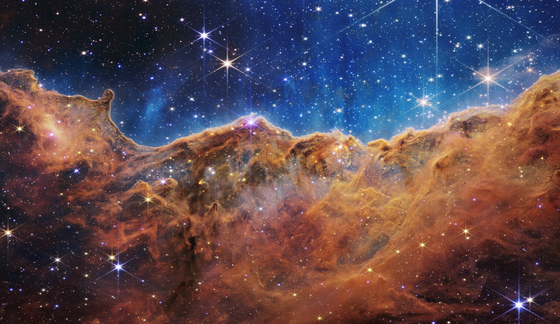
“Cosmic Cliffs” in the Carina Nebula (NIRCam Image) 421
What looks much like craggy mountains on a moonlit evening is actually the edge of a nearby, young, star-forming region NGC 3324 in the Carina Nebula. Captured in infrared light by the Near-Infrared Camera (NIRCam) on NASA’s James Webb Space Telescope, this image reveals previously obscured areas of star birth.
Called the Cosmic Cliffs, the region is actually the edge of a gigantic, gaseous cavity within NGC 3324, roughly 7,600 light-years away. The cavernous area has been carved from the nebula by the intense ultraviolet radiation and stellar winds from extremely massive, hot, young stars located in the center of the bubble, above the area shown in this image. The high-energy radiation fro...
Details
Created
Jul 15th, 2022, 04:19
Blockchain
ETH
Storage
blockchain
Token standart
ERC-721
Metadata
Unlockable content
No
Rarity
Rarity score
N/A
Rarity rank
N/A / 5102
Trait count
2
What is the value?
Price
Sales
Sales (All)
N/A
Avg collection sales (All)
N/A
Difference
N/A
Collectible last sale price
--
Collection avg price (All)
--
Difference
N/A
Collectible last sale price
--
Collection min price (All)
--
Difference
N/A
Successful royalty payments
--
Skipped royalty payments
--
Difference
N/A
Activity history
Processing data. Please, come back later.
Critical Risk
Details
0 sales per last month
Decentralized storage
Collection tokens5102 tokens
Unique Owners863 / 16.91%
Blockchain
0%
Custom contract
ERC-721
Not editable metadata stored on ipfs or blockchain
0 potential sales
0% missed royalty fee
The original collection.
Found 0 similar collections
More from “Cosmic Cliffs” in the Carina Nebula (NIRCam Image)
| # | NFT | 7D CHANGE |
|---|
Showing 1-10 out of 5,101
Rows per page
10